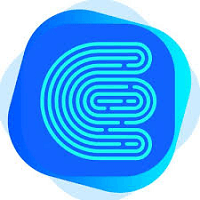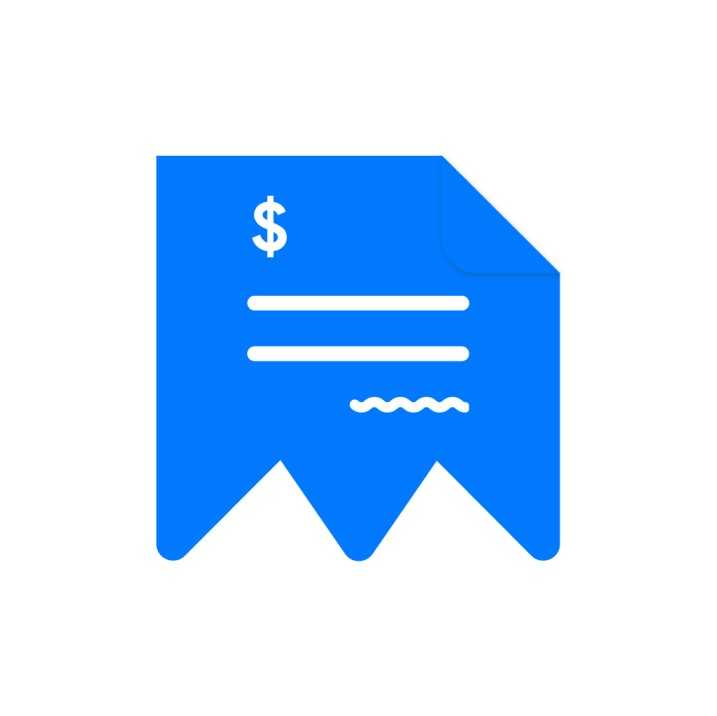Description

Entryless

Ramp
Comprehensive Overview: Entryless vs Ramp
As of the latest available data up to October 2023, Entryless and Ramp are both fintech solutions catering to business financial management, though they focus on different functions and target markets. Here’s a comprehensive overview of each:
Entryless
a) Primary Functions and Target Markets
- Primary Functions: Entryless is primarily an accounts payable automation platform. It helps businesses automate the process of managing vendor bills and payments. Entryless captures invoices from various sources, extracts relevant data using OCR (Optical Character Recognition), and processes them for payment, reducing manual entry and errors.
- Target Markets: Its primary users are small to medium-sized businesses (SMBs) and accounting firms that aim to simplify invoice processing and accounts payable management.
b) Market Share and User Base
- Market Share: Entryless is a niche player compared to larger comprehensive accounting platforms like QuickBooks or Xero, which often include basic invoicing features natively.
- User Base: The user base mainly consists of SMBs looking for targeted AP solutions rather than full-suite financial software. The focus on automation and streamlining accounts payable attracts businesses seeking efficiency and cost-effectiveness.
c) Key Differentiating Factors
- Specialization: Entryless specializes in AP automation, distinguishing itself with features like multi-currency support and integration with various accounting systems, making it appealing to businesses with specific needs in this area.
- User-Friendly Interface: Known for its ease of use, Entryless is appreciated for intuitive workflows that require minimal training.
Ramp
a) Primary Functions and Target Markets
- Primary Functions: Ramp is a corporate card and spend management platform that offers tools such as expense tracking, bill payment, and real-time reporting. It provides businesses with smart cards that automate expense categorization and help in managing employee spending effectively.
- Target Markets: Ramp targets small to large-sized enterprises, especially those looking for corporate card solutions and a more streamlined expense management system. Additionally, they cater to tech-savvy companies that prioritize integration and data insights.
b) Market Share and User Base
- Market Share: Ramp is a significant player in the corporate card and spend management space. They are part of a competitive group including companies like Brex and Divvy, which target tech startups and growth-focused businesses.
- User Base: Ramp's user base is varied, consisting of fast-growing startups, mid-market companies, and larger enterprises looking for a modern approach to corporate expenses and budget management.
c) Key Differentiating Factors
- Credits and Cashback: Ramp offers distinct financial incentives like cashback on purchases, which acts as an attraction for businesses looking to optimize their spending returns.
- AI and Automation: With advanced AI capabilities, Ramp automates manual finance tasks and provides valuable insights, enabling finance teams to focus more on strategic finance operations rather than manual processes.
- Integration and Usability: Ramp places a strong emphasis on integrations with existing financial systems and ease of setup, which appeals to modern businesses looking for seamless technology that sits effortlessly within their ecosystems.
Comparative Overview
- Functionality Niche: Entryless is more focused on accounts payable automation, while Ramp provides a broader suite including corporate cards and expense management.
- Target Customer Profile: Entryless is typically sought after by smaller businesses and accounting firms needing specific AP automation, whereas Ramp targets a wider range including startups up to large enterprises interested in comprehensive spend management.
- Product Strengths: Entryless is prized for its specificity and simplicity in AP, whereas Ramp is favored for automation, real-time financial insights, and cashback incentives.
Both tools reflect current trends in financial technology focused on automation and efficiency but apply these principles differently based on their targeted operational areas and clientele.
Contact Info

Year founded :
2013
+1 888-385-9178
Not Available
United States
http://www.linkedin.com/company/entryless

Year founded :
2019
Not Available
Not Available
United States
Not Available
Feature Similarity Breakdown: Entryless, Ramp
When comparing Entryless and Ramp, both of which are financial management solutions, it's useful to break down their features to understand where they overlap and how they differ. Here's a structured look at these aspects:
a) Core Features in Common
-
Expense Management:
- Both Entryless and Ramp offer expense management solutions that help businesses automate expense reporting and track spending.
-
Integration with Accounting Software:
- They provide integrations with major accounting platforms like QuickBooks and Xero, facilitating seamless data synchronization.
-
Receipt Scanning and Data Extraction:
- Both platforms enable users to scan receipts, with automatic extraction of key information to simplify recording expenses.
-
Financial Reporting:
- They offer essential reporting tools that help users analyze financial data and gain insights into spending patterns.
-
Approval Workflows:
- Customized approval processes are supported by both, allowing for streamlined and controlled expense approvals.
b) User Interface Comparison
-
Entryless:
- Entryless typically offers a straightforward, minimalist interface designed for ease of use. It focuses heavily on simplicity, and automation features are prominently highlighted to streamline the entry of invoices and receipts.
-
Ramp:
- Ramp’s interface is modern, sleek, and highly interactive, emphasizing a visual representation of data with dashboards that provide quick insights into spending habits. Users often note that it’s designed to be more engaging, with intuitive navigation and user-centric design principles.
c) Unique Features
-
Entryless Unique Features:
- Global Compliance Support: Entryless stands out with stronger support for managing tax compliance across different jurisdictions, which can be particularly valuable for international businesses.
- Invoice Management Focus: Entryless provides specialized tools for invoice management, specifically tailored to automate and simplify the accounts payable process.
-
Ramp Unique Features:
- Corporate Card Program: Ramp offers a corporate card with integrated card management, which provides users with real-time expense tracking and cash back rewards.
- Advanced Analytics: Ramp includes a heavy focus on analytics, with enhanced tools for financial forecasting and spend analysis that make it suitable for businesses looking for deeper insights.
- AI-Driven Insights: Ramp uses AI to deliver proactive insights and alerts, helping businesses identify savings opportunities and optimize spend.
Both platforms serve to streamline financial operations, but the choice between them may hinge on specific business needs such as international operations support with Entryless or more advanced analytical features and integrated card management with Ramp.
Features

Automated Data Entry
Integration with Accounting Software
Expense Management
Invoice Management

Budgeting and Forecasting
Reporting and Analytics
Expense Management
Transaction Approval Workflow
Corporate Cards
Best Fit Use Cases: Entryless, Ramp
Entryless and Ramp are both financial management tools, but they serve different purposes and audiences. Here's a breakdown of the best use cases for each, focusing on industry verticals and company sizes:
Entryless:
a) Best Fit Use Cases for Entryless:
-
Types of Businesses:
- Small to Medium-sized Enterprises (SMEs): Entryless is ideal for SMEs looking to automate their accounts payable process. These businesses typically do not have extensive accounting departments and benefit from streamlined bill processing.
- Accounting Firms: Firms managing multiple client accounts find Entryless useful for automating and simplifying invoice processing across clients.
- Startups: New businesses with limited resources can leverage Entryless to manage their finances with minimal human intervention.
-
Types of Projects:
- Operational Efficiency Projects: Businesses focusing on improving their back-office efficiency can utilize Entryless to reduce manual data entry and errors.
- Digital Transformation Initiatives: Companies aiming to digitize their accounting processes find Entryless a useful tool for moving away from paper-based systems.
d) Catering to Industry Verticals or Company Sizes:
- Entryless is versatile across industries that deal with significant amounts of vendor bills, such as retail, hospitality, and manufacturing. It is particularly beneficial for companies with high transaction volumes or complex vendor arrangements.
- The platform's scalability makes it suitable for small to mid-sized companies, but it might be less ideal for very large enterprises with complex, bespoke accounting needs.
Ramp:
b) Best Fit Use Cases for Ramp:
-
Types of Businesses:
- Technology Companies: Fast-growing tech startups and SaaS companies benefit from Ramp’s spend management capabilities and real-time insights.
- Professional Services Firms: Firms that frequently manage client expenses and require robust spend tracking and control can leverage Ramp’s features to enhance visibility and control over expenses.
- E-commerce: Businesses in e-commerce that need dynamic spend management to keep up with fluctuating costs and extensive vendor lists.
-
Types of Projects:
- Cost Management Initiatives: Projects focused on reducing unnecessary spending and optimizing financial performance benefit from Ramp’s comprehensive analytics and reporting tools.
- Corporate Card Management: Companies looking to manage employee expenses efficiently while gaining real-time tracking can use Ramp’s card offerings.
d) Catering to Industry Verticals or Company Sizes:
- Ramp is designed with scalability in mind, making it suitable for a wide range of industries, including tech, e-commerce, and professional services. Its strengths are most pronounced in organizations that prioritize dynamic spend management and real-time financial oversight.
- While it can serve businesses of various sizes, Ramp particularly excels in mid-sized to larger organizations where spend control and employee expense management are more complex and require sophisticated solutions.
In summary, Entryless is best for SMEs and firms focused on accounts payable automation, while Ramp is favored by companies seeking robust spend management and spend analytics, particularly in tech-driven, rapidly scaling environments.
Pricing

Pricing Not Available

Pricing Not Available
Metrics History
Metrics History
Comparing teamSize across companies
Conclusion & Final Verdict: Entryless vs Ramp
Conclusion and Final Verdict for Entryless vs. Ramp
a) Considering all factors, which product offers the best overall value?
Determining which product offers the best overall value depends on the specific needs and priorities of the user. However, for organizations seeking an all-in-one solution for financial management and spend control, Ramp generally offers better overall value due to its expansive feature set including expense management, bill payments, and corporate card functionalities. Ramp is particularly advantageous for growing businesses looking for efficiency and integrated solutions.
b) Pros and Cons of Each Product
Entryless:
Pros:
- Straightforward AP Automation: Entryless is known for its efficiency in automating the accounts payable process, making it easy to convert bills into digital formats and integrate seamlessly with accounting software.
- Simplicity and Ease of Use: The platform is user-friendly and focuses on simplifying AP tasks, which can be beneficial for businesses looking for simplicity without too many additional features.
- Cost-Effective for AP Needs: Generally offers good value for money if your primary need is AP automation.
Cons:
- Limited Feature Set: Lacks broader financial management tools such as expense tracking and spend analysis.
- Not a Comprehensive Solution: Primarily focused on AP, which might require users to invest in additional software for full financial oversight.
Ramp:
Pros:
- Multi-Faceted Financial Tool: Offers a wide range of financial management features, including corporate cards, expense tracking, and billing management.
- Integration and Automation: Strong capabilities in integrating with other major financial platforms and automating financial workflows.
- Spend Management and Insights: Advanced analytics and reporting tools provide valuable insights into spend behavior and help in budget management.
Cons:
- Complexity: The broad range of features can be overwhelming for smaller businesses or those not needing extensive financial tools.
- Higher Learning Curve: Requires time to understand and implement effectively across an organization.
c) Recommendations for Users
-
For AP-Focused Needs: If your primary need is automating the accounts payable process and you value simplicity and cost-effectiveness, then Entryless would be a suitable choice. It is ideal for businesses that have existing solutions for other aspects of financial management and are looking to enhance your AP process specifically.
-
For Comprehensive Financial Management: If you are looking for an all-in-one tool that handles not just accounts payable but also other aspects of financial management like expense tracking and spend control, Ramp is recommended. It is particularly beneficial for companies looking to consolidate financial operations within a single platform and gain insightful analytics on their spending patterns.
-
Consider Scale and Growth: Businesses that anticipate growth or have complex financial management needs will likely benefit more from Ramp's comprehensive offerings. Small businesses or those with less integrated financial processes might find Entryless suits their current scale and needs.
Ultimately, the choice between Entryless and Ramp should align with your organization’s specific requirements, scale, and long-term goals for financial management.
Add to compare




